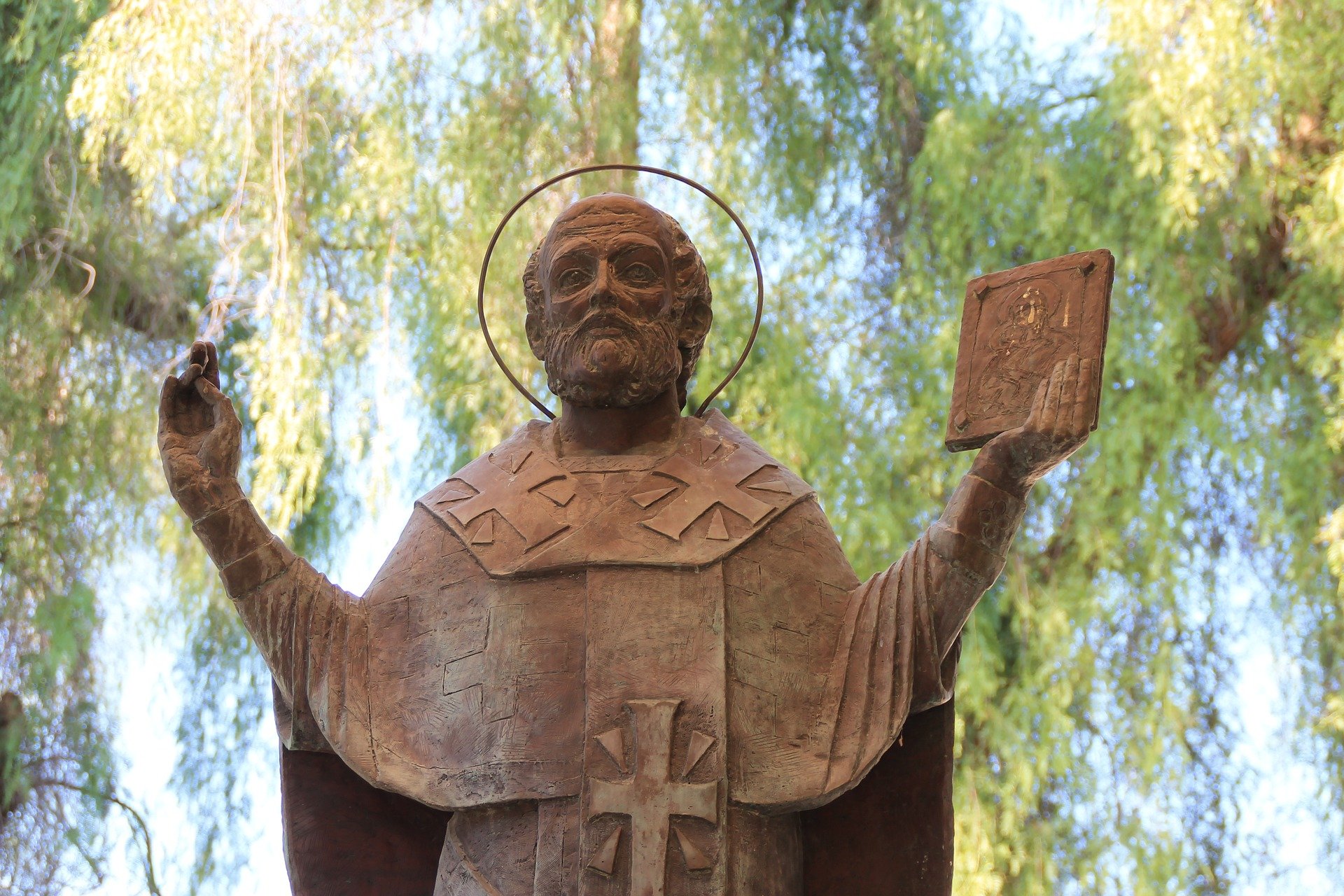Last updated on December 3, 2020
The second week of Advent has begun! Here is this week’s collect:

It is also a day the Church annually remembers St. Nicholas of Myra, that is, the real Santa Claus. December 6th is the traditional anniversary of his death.
Recently, we had to break the news about Santa to my son, who is 8. This was very hard for my wife and I.
Anyone who has known me from childhood knows that I have what, at times, could be called an obsession with Christmas. I could listen to Christmas music year-round (“secretly” I still do…but mostly of the instrumental variety) and I collected Christmas decorations and St. Nicholas Square villages from Kohl’s (which I still have). I love Christmas movies (but not the Hallmark ones…I just can’t) and Christmas stories. I love the all the traditions, pageantry, and “magic” that accompanies this time of year. And I especially love going to Bronner’s Christmas Wonderland in Frankenmuth, MI and to the Lights at the Toledo Zoo.
So I was less than pleased when my brother, 4 years younger than me, told me long ago that he found all of “Santa’s” presents hidden in the basement. That’s right, I learned the truth about Santa from my younger freaken’ brother.
But my son was recently writing a letter to Santa in which he said, “Dear Santa, I tried to be good, but it’s impossible.”
That broke our heart. Now on the one hand, from a Christian standpoint, he’s right. It’s only by God’s grace and by His goodness that we can do anything good and pleasing to God. Humanity’s “default” is sin, which is why Jesus had to come and die that He might make the sacrifice we could never make and do what we could never do to earn our salvation. That’s why Christians often refer to themselves as “saved,” because Jesus has saved us from the eternal consequences of our sin.
While I regularly share the Gospel with my children, 8 years old is a little too early to get into the details of “total depravity.” But it’s not too early to explain grace. So we told him the more magical or popular version of Santa is an invention, and that he would be receiving gifts on Christmas because we love him and have the means to provide them…not because he’s been “bad or good.”
At the same time, we also explained that Santa Clause, or St. Nicholas, was once very real, and his story has inspired legends, like the ones we live with, since the 3rd Century AD.
Indeed, the real St. Nicholas is arguably more interesting than the modern one.
St. Nicholas was born in the late 3rd century AD in what was once Myra, Turkey and lived in the Roman Empire. Little is known of the historical Nicholas, but the legends surrounding him are fascinating. He is said to have saved three girls from being sold into prostitution, he raised children from the dead, calmed a storm, and chopped down a demon-possessed tree (which is how I feel about all trees that I’m allergic to). He was a Bishop in the Catholic Church and was once imprisoned for his faith, but survived once Constantine I became emperor. His generosity from a young age is part of the inspiration for what we’ve come to know as Santa Claus. My favorite story, though, which may or may not be true, is that he slapped Arius at the Council of Nicaea.
Much of what we see and think about Santa and his association with Christmas has been around since the late 18th and early 19th Century with works such as “The Night Before Christmas” (1823) and later songs and stories by authors such as L. Frank Baum’s The Life and Adventures of Santa Claus (1902). And, as we told my son, so much of what makes Santa who he is, is VERY real. Santa represents generosity, for example, and myths about Santa are important indicators of how different cultures understand themselves and Christmas (since Santa is not thought of in exactly the same way in every country)
Most important, as we told our son, the Nativity of Jesus and the story of the first Christmas is entirely real. The birth of the Messiah is the gift that inspired the real – and the imagined – St. Nick to do everything he did and does.
I could go on, but I have lots of grading to do and student tears to drink.
To learn more about St. Nick check out the following links:
St. Nicholas Center (this site is great!)
A History of Santa Claus and Father Christmas: Guide to Online Resources

Comments are closed.